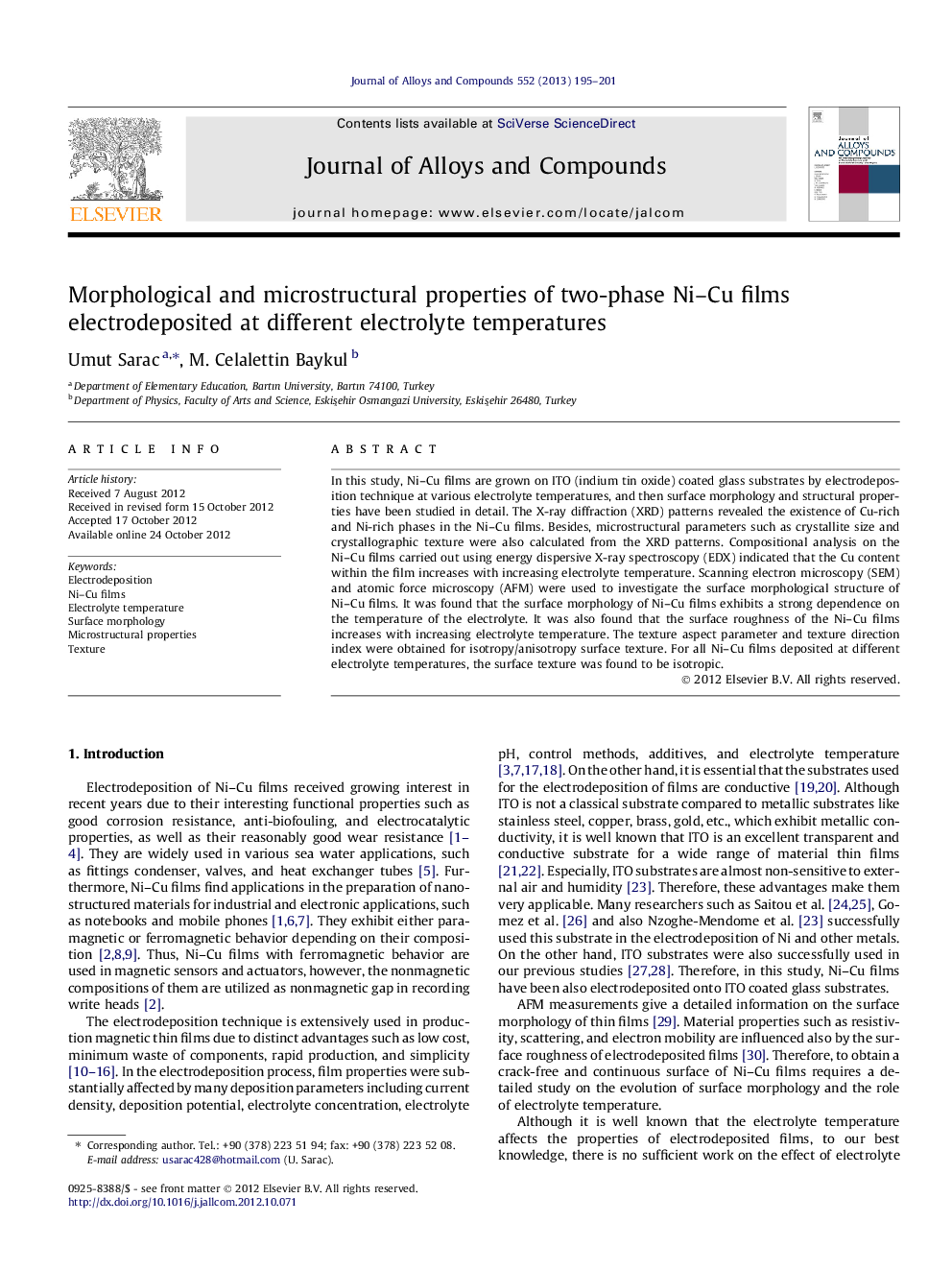| Article ID | Journal | Published Year | Pages | File Type |
|---|---|---|---|---|
| 1614813 | Journal of Alloys and Compounds | 2013 | 7 Pages |
In this study, Ni–Cu films are grown on ITO (indium tin oxide) coated glass substrates by electrodeposition technique at various electrolyte temperatures, and then surface morphology and structural properties have been studied in detail. The X-ray diffraction (XRD) patterns revealed the existence of Cu-rich and Ni-rich phases in the Ni–Cu films. Besides, microstructural parameters such as crystallite size and crystallographic texture were also calculated from the XRD patterns. Compositional analysis on the Ni–Cu films carried out using energy dispersive X-ray spectroscopy (EDX) indicated that the Cu content within the film increases with increasing electrolyte temperature. Scanning electron microscopy (SEM) and atomic force microscopy (AFM) were used to investigate the surface morphological structure of Ni–Cu films. It was found that the surface morphology of Ni–Cu films exhibits a strong dependence on the temperature of the electrolyte. It was also found that the surface roughness of the Ni–Cu films increases with increasing electrolyte temperature. The texture aspect parameter and texture direction index were obtained for isotropy/anisotropy surface texture. For all Ni–Cu films deposited at different electrolyte temperatures, the surface texture was found to be isotropic.
► XRD analysis revealed the existence of Cu-rich and Ni-rich phases. ► An enhancement in the electrolyte temperature weakens the 〈1 1 1〉 texture. ► The Cu content was found to increase with increasing electrolyte temperature. ► Morphological studies showed that the surface morphology changes considerably with electrolyte temperature. ► The surface texture of all Ni–Cu films was found to be isotropic.
